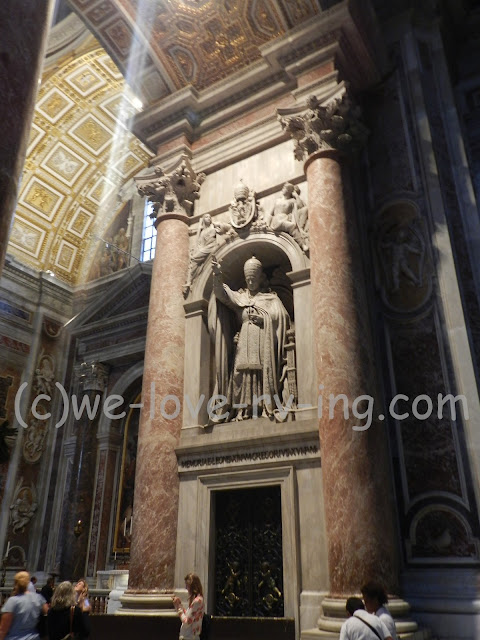It was lunchtime on a hot Roman day and we were looking for a place to enjoy a lunch. The square in front of the Pantheon has several cafés around the perimeter of it and we chose the one right on the corner so we could get a front row seat to look at this magnificent historical engineering feat.
We’d gone inside the Pantheon the night before when it was getting dark so we needed to come back to get the daylight photos and I was so glad we did. It isn’t a building that gives a flashy ‘wow’ factor but in a very quiet way, displays a protecting shield to an incredible treasure. The familiar portico and 14 meter columns of the Pantheon exude history.
The Pantheon was built by Hadrian in 120AD and still has the original bronze doors of that day. These incredible large doors are over 2000 years old! Other bronze that was originally put inside was stripped away to make canons in the sixteenth century but that pilfering left no damage to the structure.
Noontime during the summer solstice the sun would shine straight down through the nine meter opening of this oculus and reach the floor. That would be an incredible sunbeam to see! If you were to stand beneath and look up during a rainy time, you’d feel the raindrops. It really is open, although I couldn’t test that so we have to believe.
 |
| The oculus of the Pantheon in Rome |
The size of the interior of the Pantheon is 43 meters in diameter and is a full circle. The dome was made of concrete and was the largest existing dome for over 1000 years and is still the largest of a non-reinforced dome in the world. The Pantheon was never destroyed throughout history, which is unusual for most structures from this era, it has most certainly stood the test of time.
Once the Pantheon became a Roman Catholic Church in 609, the statues of the Roman gods were replaced with religious art and sculptures. Many of them were done by the master artists of that day who have since been buried here. Raphael was one of those and his tomb is displayed inside.
The Pantheon is still used as a church and mass is celebrated there. There are several chapels and many sat in chairs during our visit although there was no service being held. Special occasions and weddings are also held in the Pantheon, now that would be a very special place for a very special day.
As on all of our days in Rome
To see some of the other sights on our visit to Rome, click here for more.























































